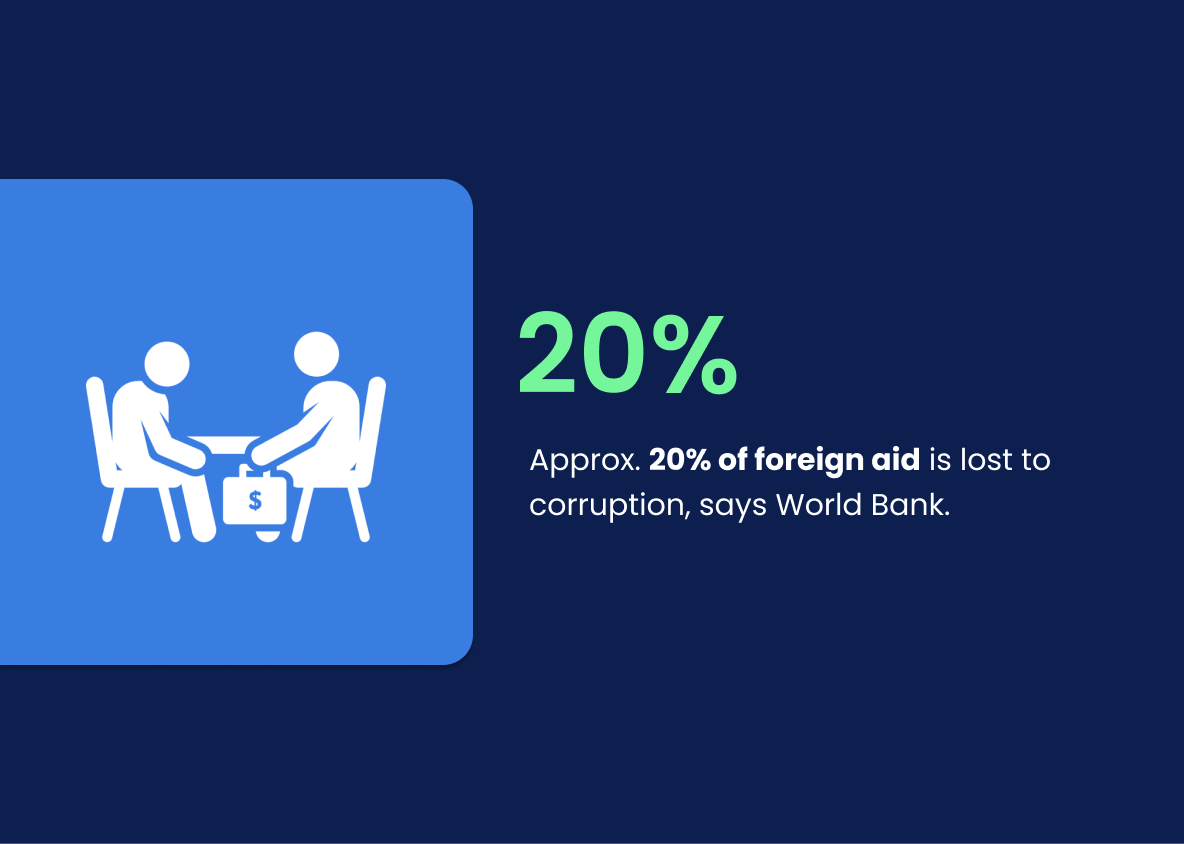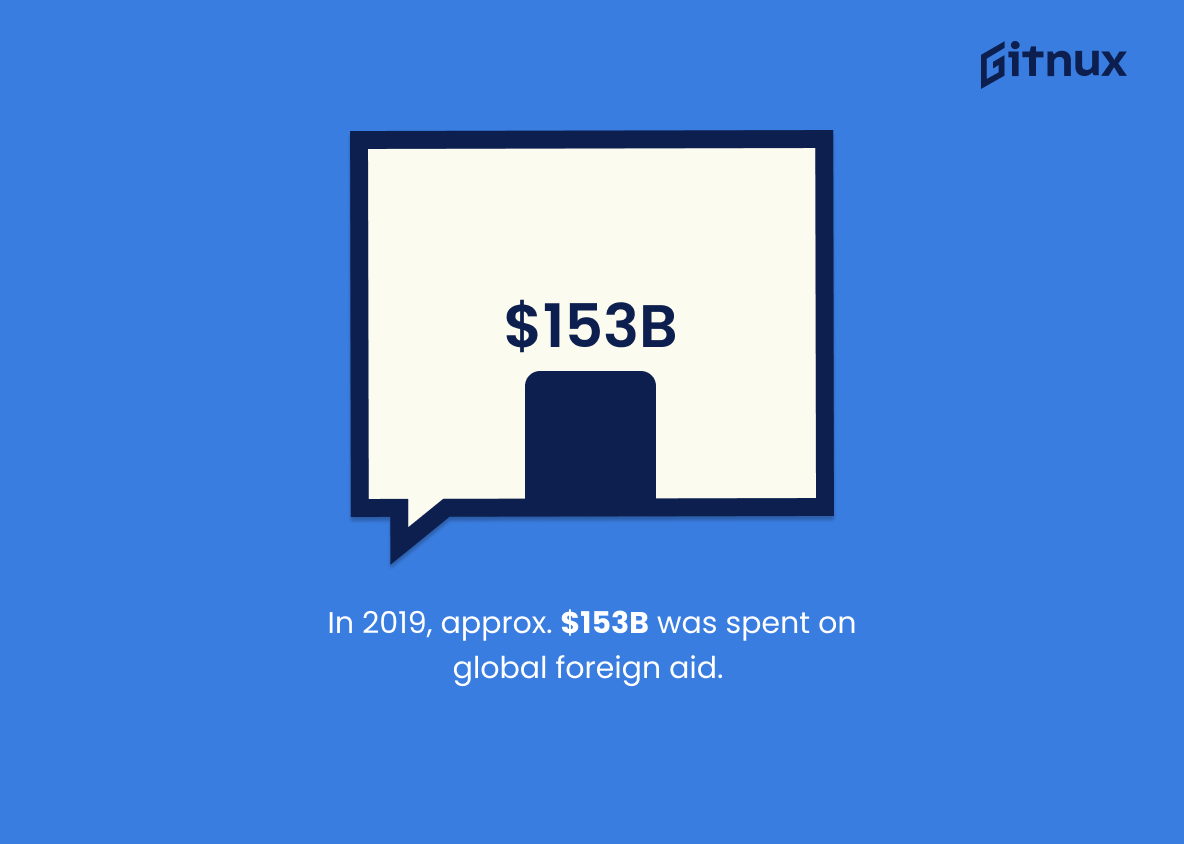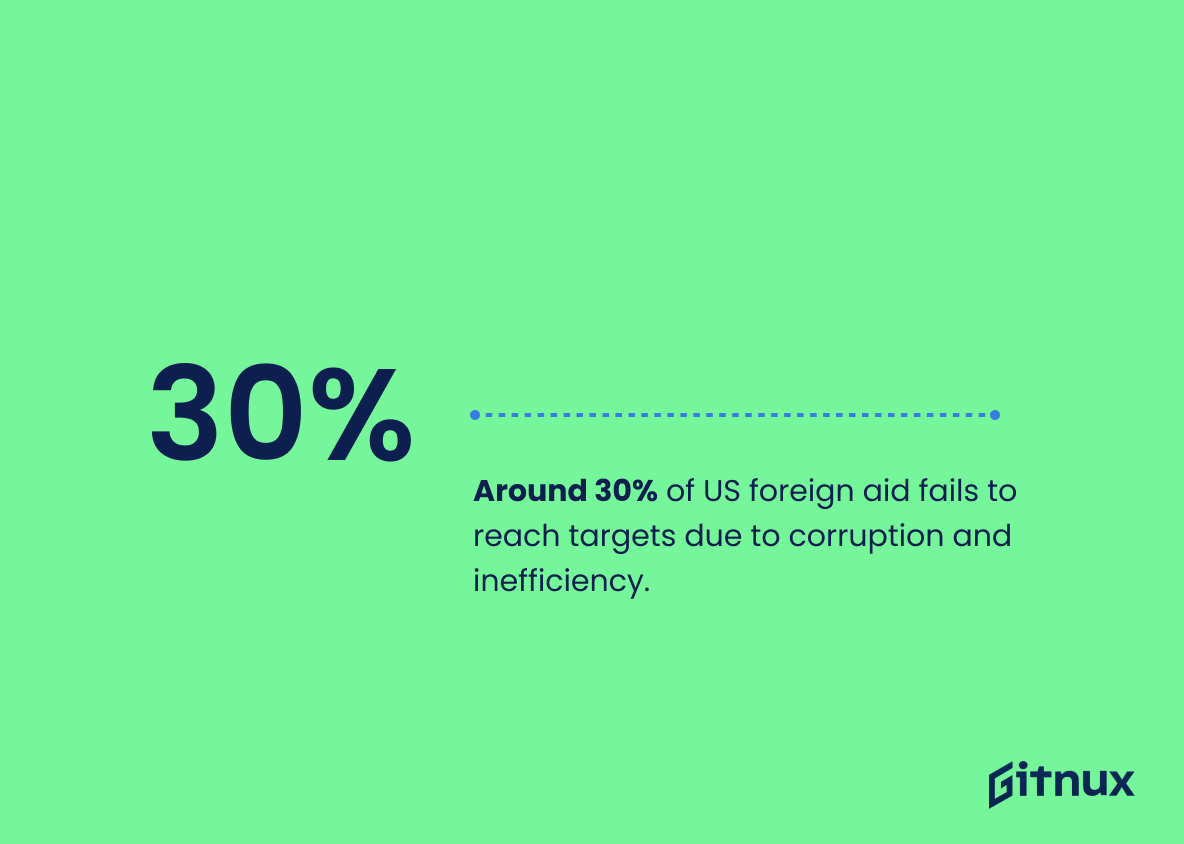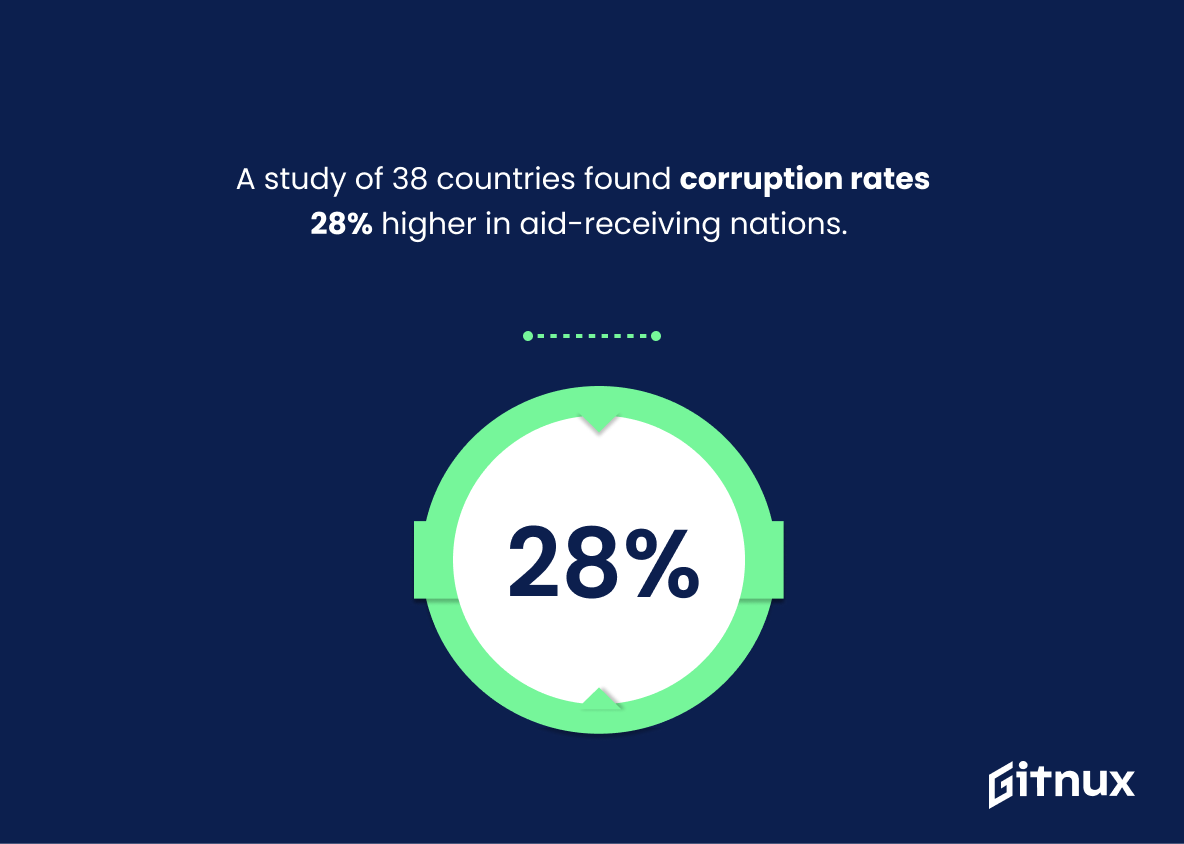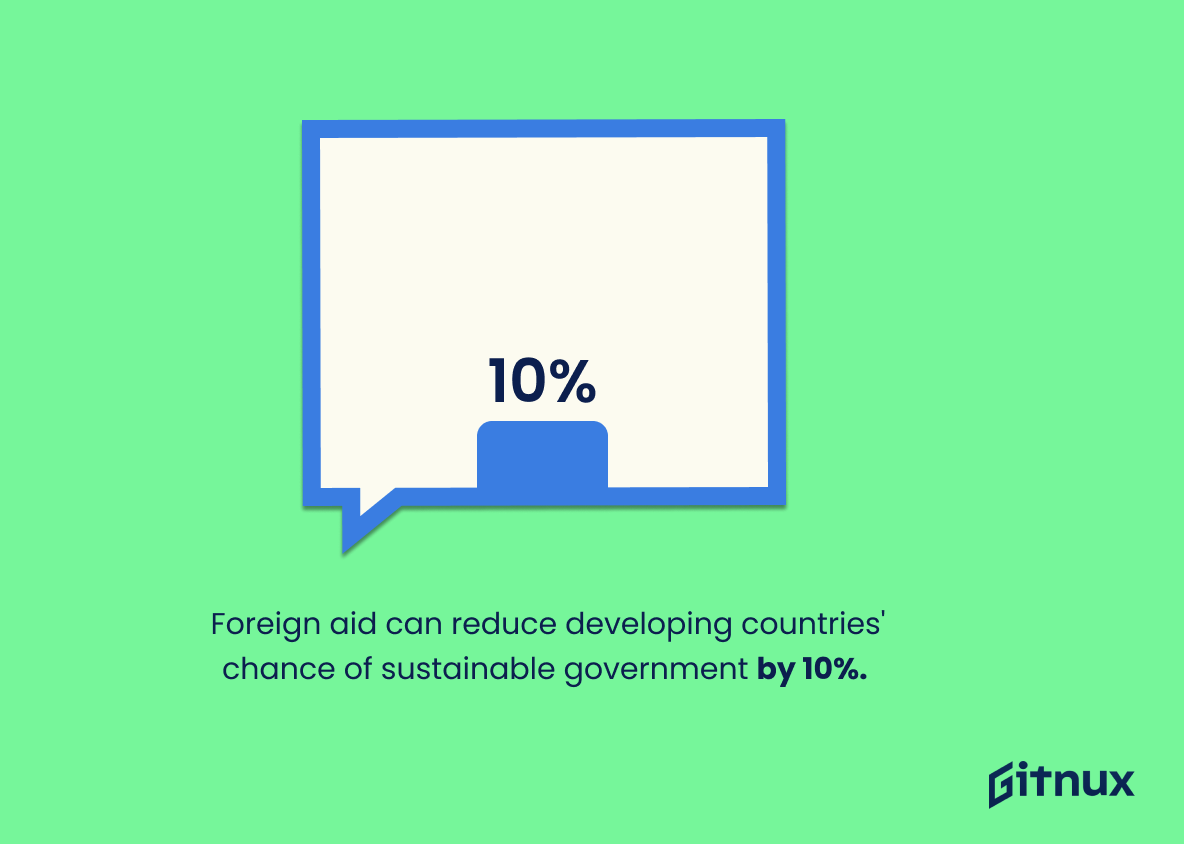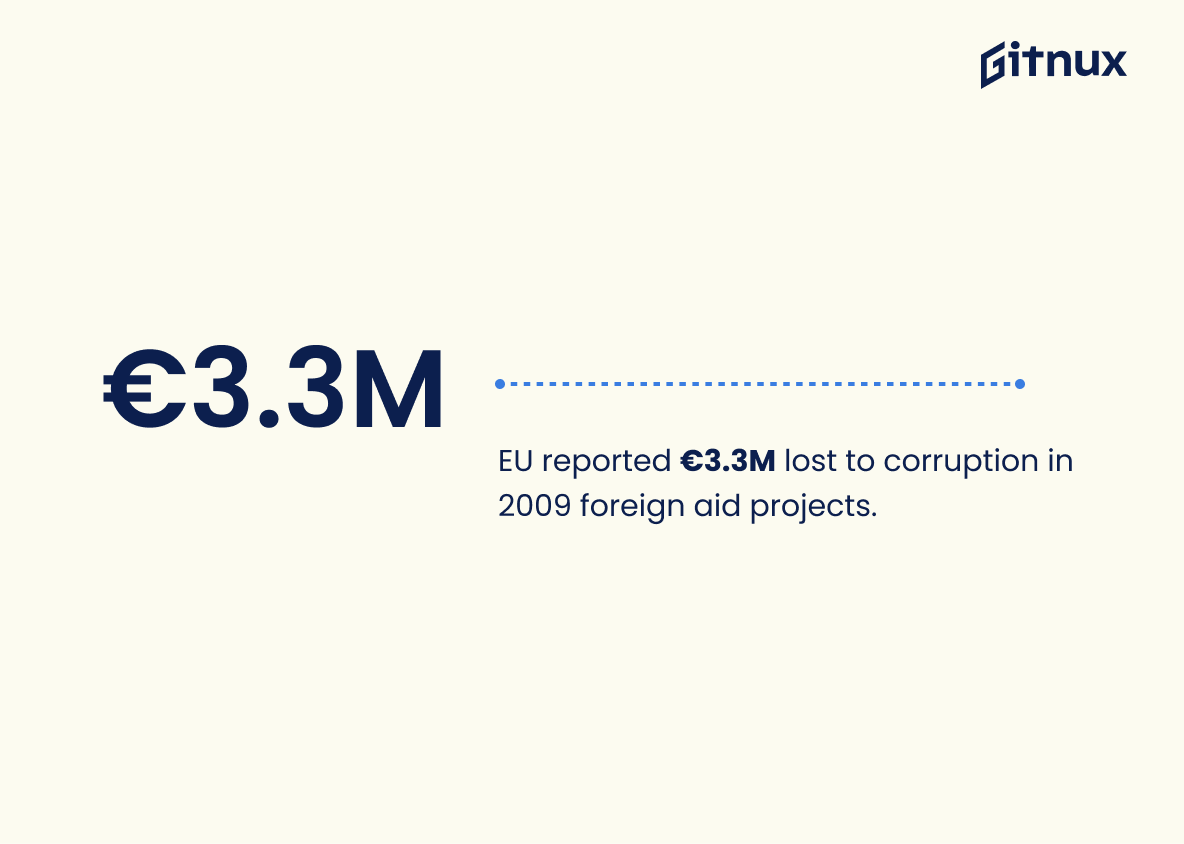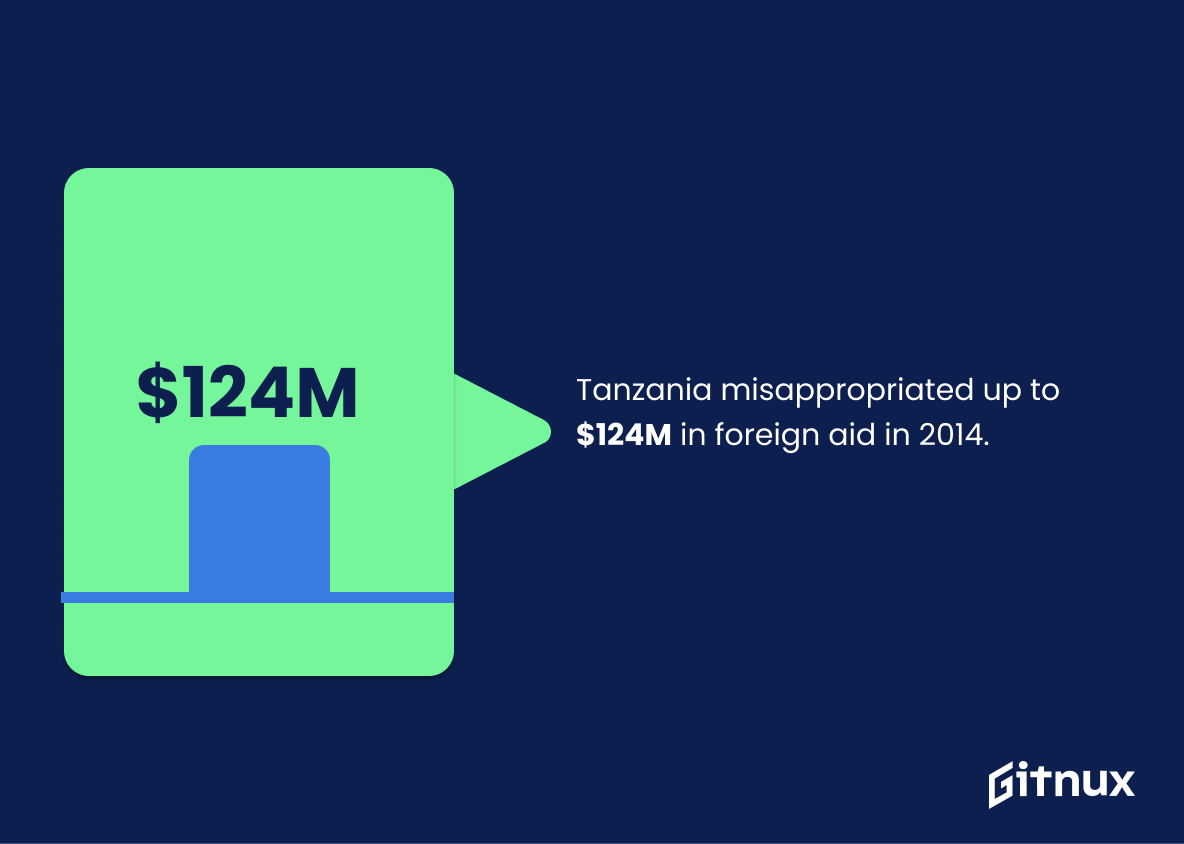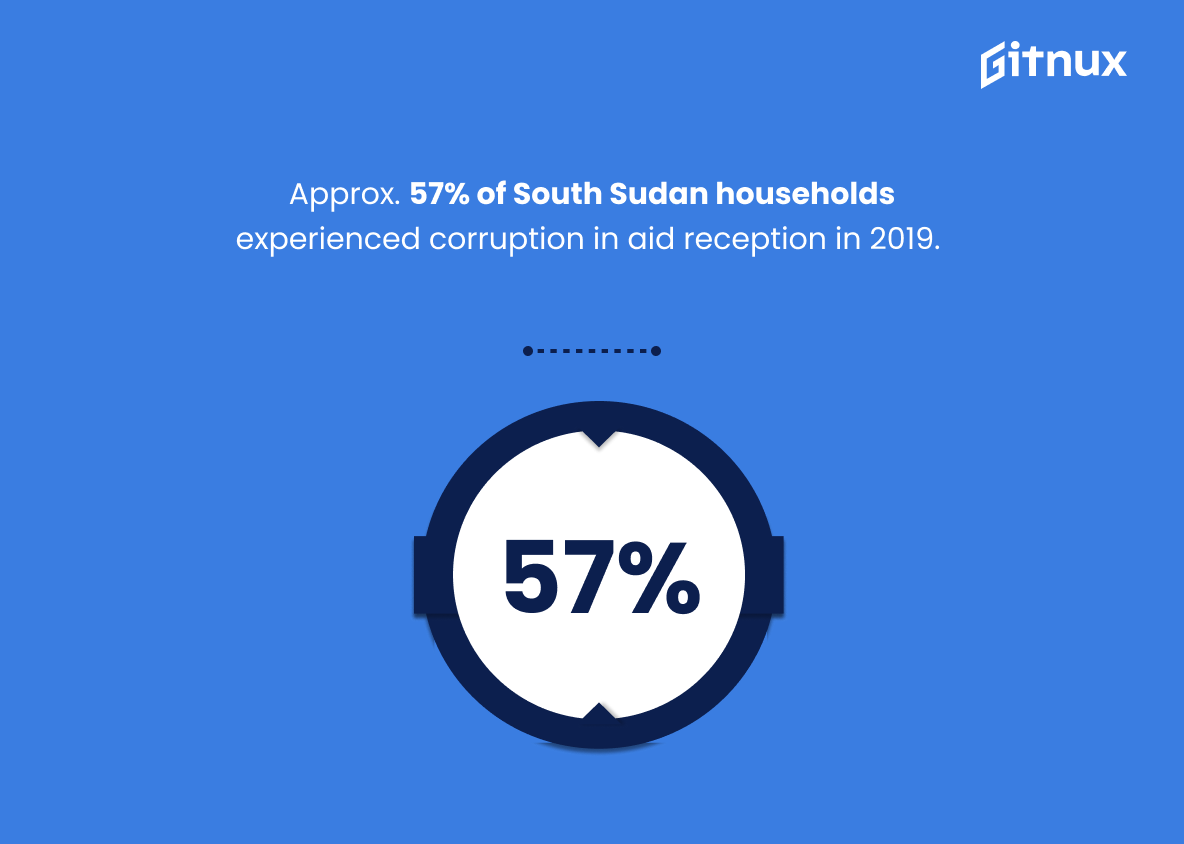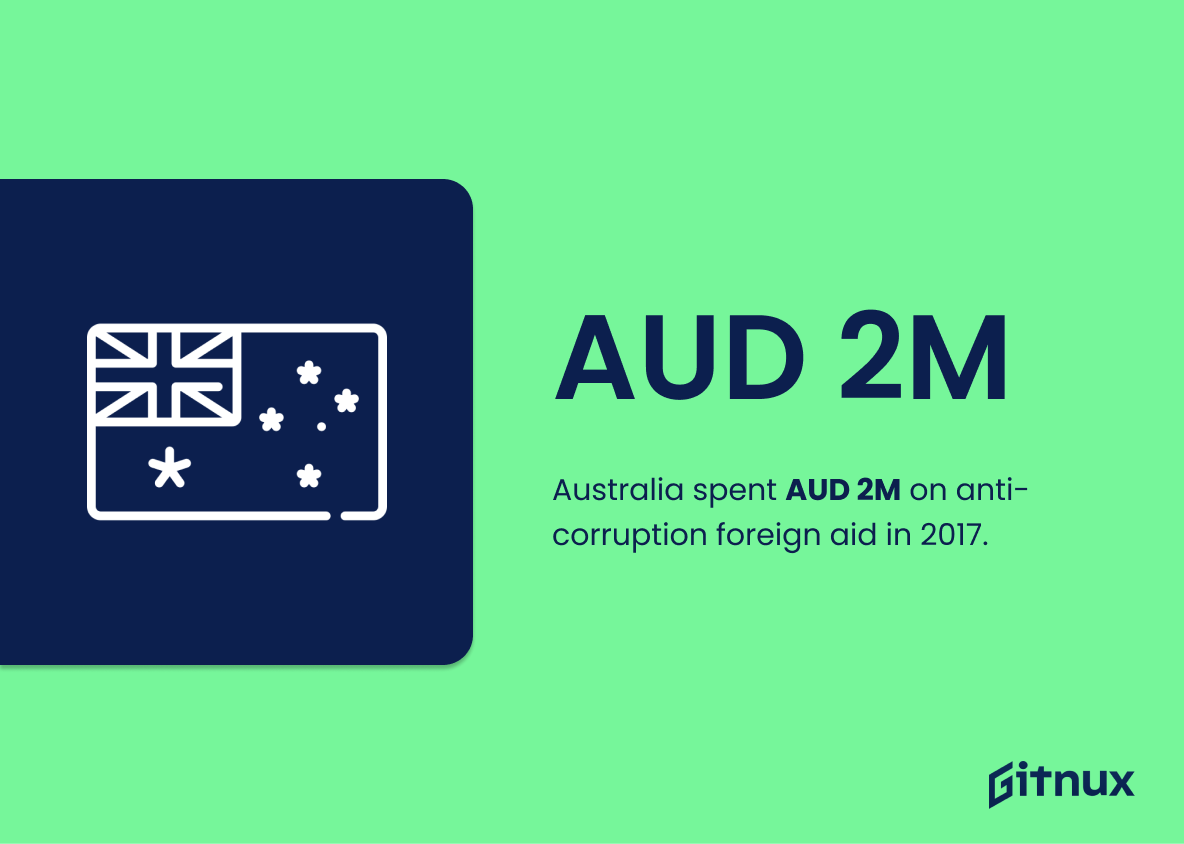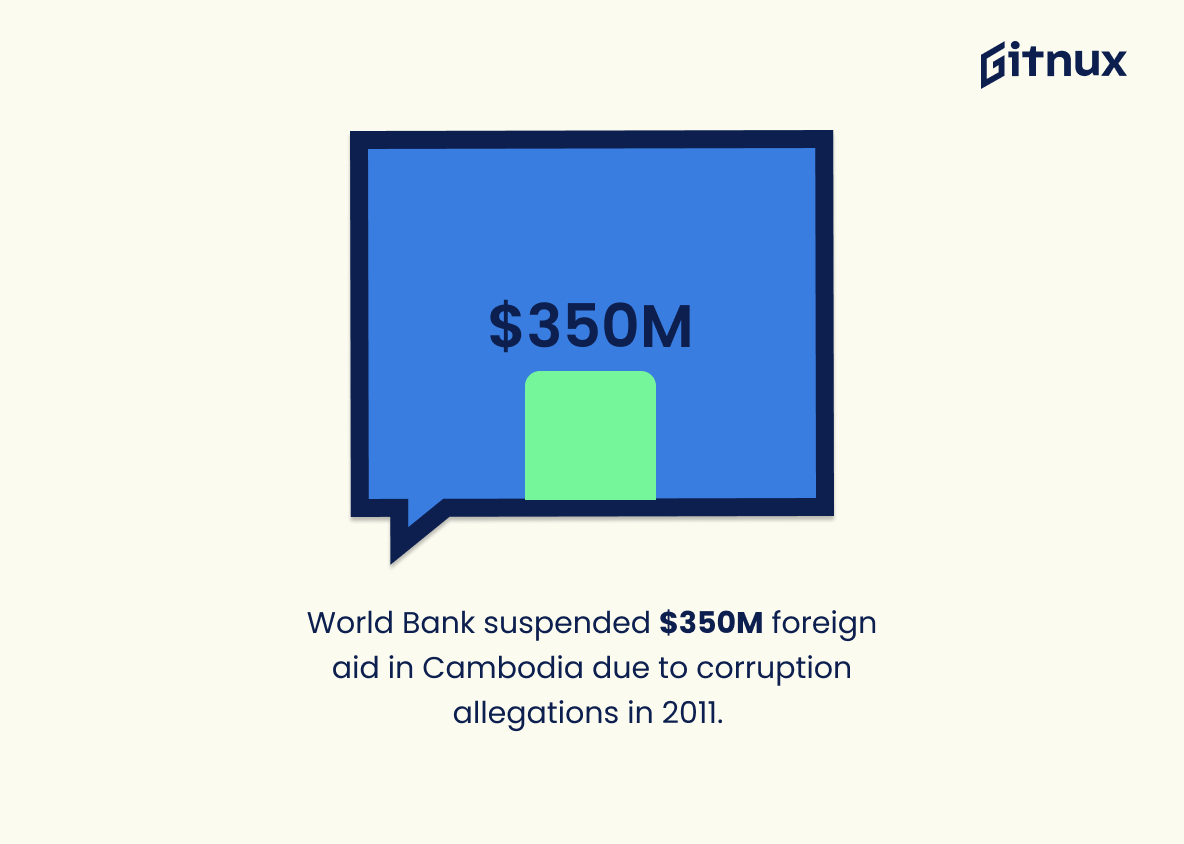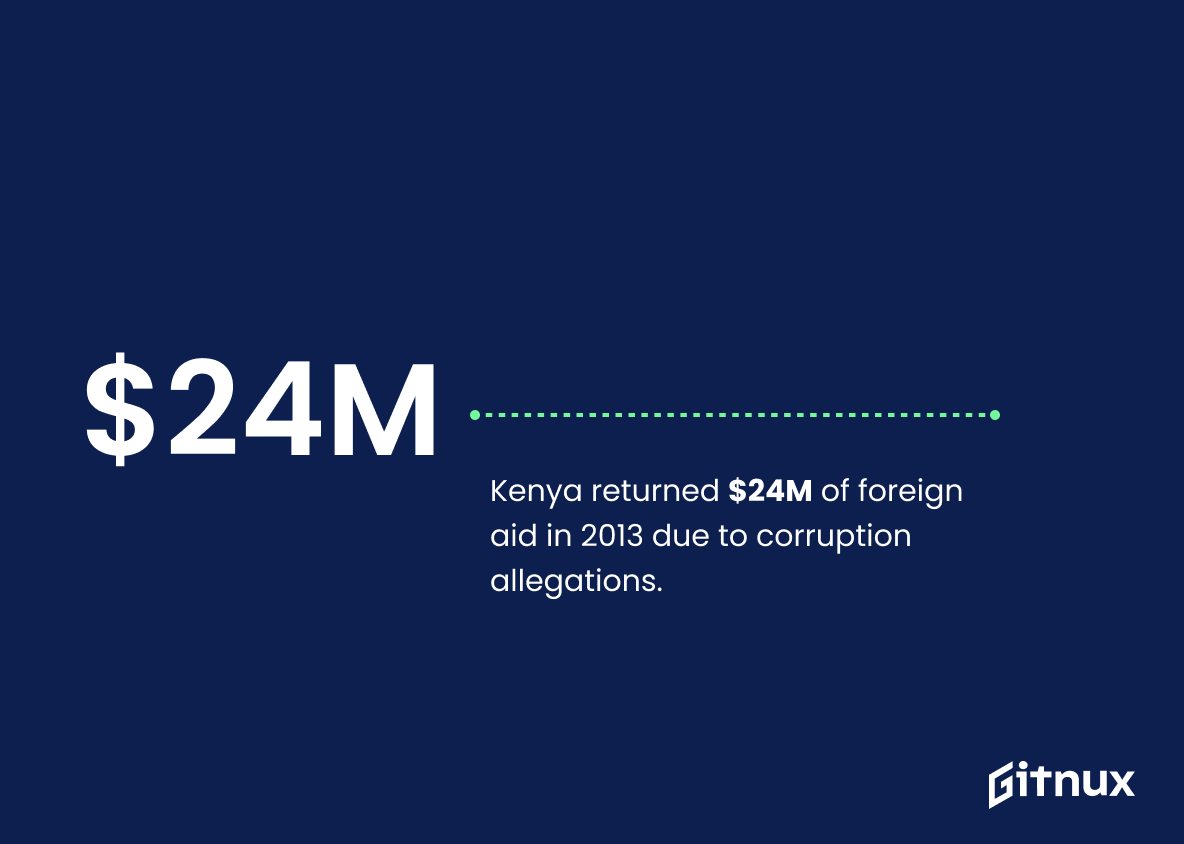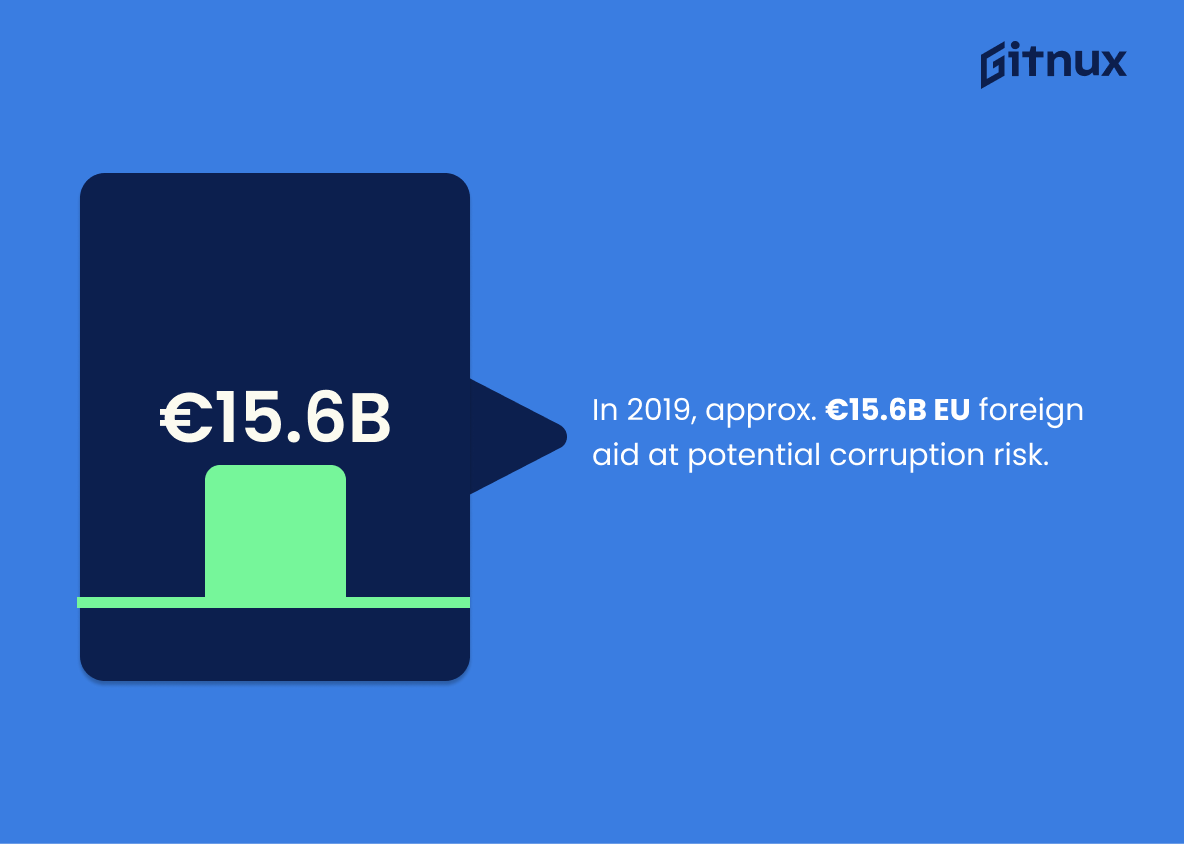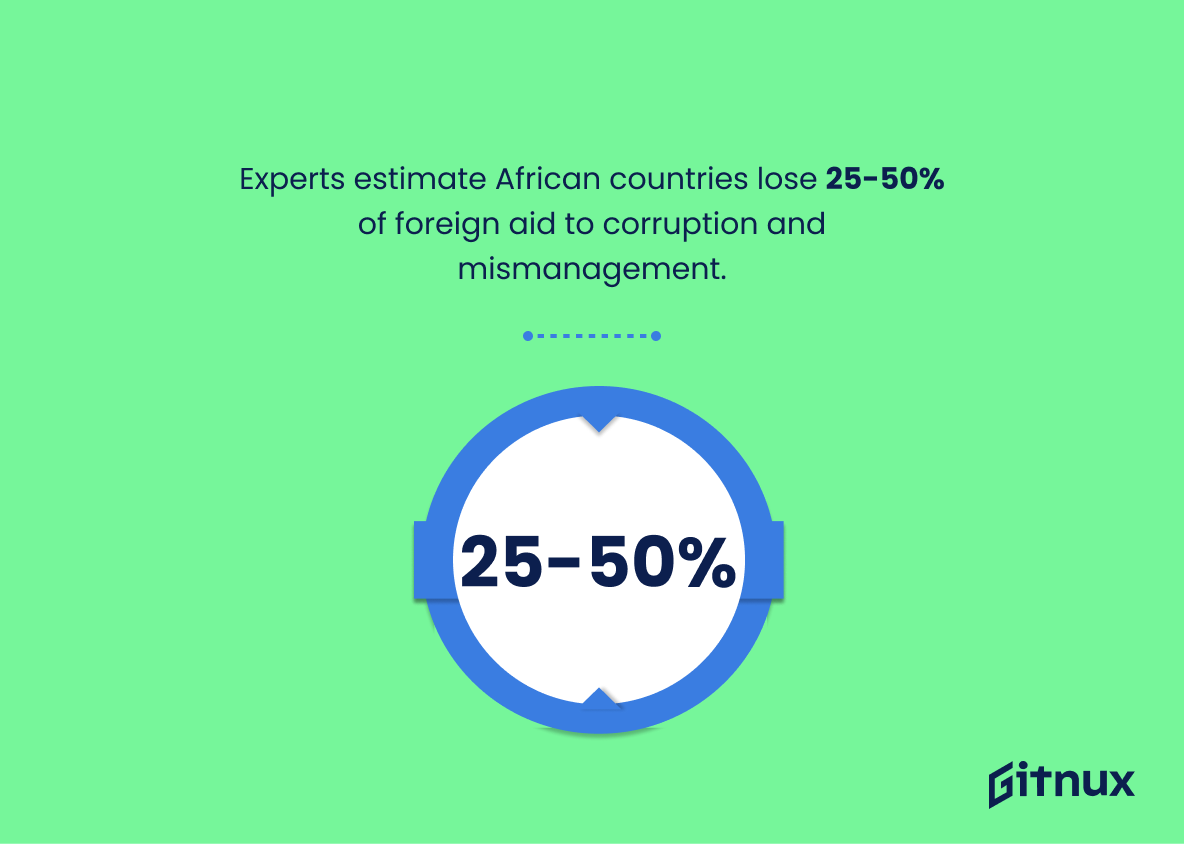The statistics on foreign aid corruption are alarming. According to the World Bank, approximately 20% of foreign aid is lost to corruption each year. In 2019, USD 153 billion was spent on foreign aid worldwide and around 30% of U.S. foreign aid fails to reach its target due to corruption and inefficiency. A study of 38 countries found that corruption rates in countries receiving foreign aid were 28% higher than those that did not receive it, while up to 70% of Afghanistan’s total amount was at risk for misappropriation in 2016 alone according to Al Jazeera News Network reports. The Organization for Economic Co-operation and Development (OECD) estimates 15 percent loss from development assistance due solely from corrupt practices as well as a 10 percentage point reduction chance for developing nations achieving sustainable government with such funds present within their borders; this number increases when considering other factors like poor reporting which Transparency International claims can increase chances by making tracing difficult if not impossible altogether – an issue seen even among developed nations like the European Union who reported 3 million euros stolen under their own watchful eye back in 2009 according EU news sources .
In Africa specifically, Heritage Foundation research shows US Foreign Aid being threatened by rampant levels of Corruption where some experts estimate between 25%-50%, while Nigeria has over 60 percent believing Government Officials have been using these funds personally instead – all leading towards a downward spiral evidenced further still through Afghanistan’s 165th place ranking out 180 Countries listed on Transparency International’s 2020 Corruption Perceptions Index report.. With so much money potentially wasted or worse yet used against its intended purpose we must ask ourselves: How do we ensure our donations make it into the right hands?
Foreign Aid Corruption Statistics Overview
Around 30% of U.S. foreign aid fails to reach its target due to corruption and inefficiency.
This statistic is a stark reminder of the devastating effects of corruption and inefficiency on foreign aid. It highlights the need for greater transparency and accountability in the distribution of foreign aid, as well as the need for more effective measures to combat corruption and inefficiency. It is a call to action for governments, international organizations, and civil society to work together to ensure that foreign aid reaches its intended recipients.
Up to 70% of Afghanistan’s foreign aid was at risk of corruption in 2016.
This statistic is a stark reminder of the prevalence of corruption in Afghanistan’s foreign aid system. It highlights the need for greater transparency and accountability in the distribution of aid, as well as the need for more effective measures to combat corruption. It is a call to action for those in positions of power to take steps to ensure that foreign aid is used for its intended purpose and not misappropriated.
A study of 38 countries found that corruption rates in countries receiving foreign aid were 28% higher than those that did not.
This statistic is a powerful indicator of the potential for corruption when foreign aid is involved. It suggests that foreign aid can be a major factor in the prevalence of corruption in a country, and that countries receiving foreign aid may be more vulnerable to corruption than those that do not. This is an important point to consider when discussing the issue of foreign aid corruption, as it highlights the need for greater oversight and accountability when it comes to the distribution of foreign aid.
Approximately 15% of development aid is lost to corruption according to the Organization for Economic Co-operation and Development (OECD).
This statistic is a stark reminder of the reality of foreign aid corruption. It highlights the fact that a significant portion of the money intended to help those in need is being misused and siphoned off for personal gain. This is a tragedy, as it means that the people who are supposed to benefit from the aid are not receiving the help they need. It also has a negative impact on the reputation of the organizations providing the aid, as it suggests that they are not doing enough to prevent corruption. This statistic is a call to action, urging organizations to take steps to ensure that foreign aid is used for its intended purpose.
Foreign aid in developing countries can reduce their chance of achieving a sustainable government by 10 percentage points.
This statistic is a stark reminder of the potential consequences of foreign aid corruption in developing countries. It highlights the fact that when foreign aid is misused, it can have a devastating impact on the ability of these countries to achieve a sustainable government. This is a critical issue that needs to be addressed in order to ensure that foreign aid is used in a way that benefits the people of these countries.
In 2009, the European Union reported that 3.3 million euros were lost to corruption in foreign aid projects under the European Development Fund.
This statistic serves as a stark reminder of the magnitude of corruption in foreign aid projects under the European Development Fund. It highlights the need for greater transparency and accountability in the management of foreign aid funds, as well as the need for more effective measures to prevent and combat corruption.
In Tanzania, as much as USD 124 million worth of foreign aid was misappropriated in 2014.
This statistic is a stark reminder of the magnitude of foreign aid corruption in Tanzania in 2014. It highlights the need for greater transparency and accountability in the management of foreign aid, as well as the need for more effective measures to prevent and combat corruption. It also serves as a warning to other countries receiving foreign aid, that they must be vigilant in ensuring that the funds are used for their intended purpose.
In South Sudan, approximately 57% of households experienced corruption when receiving aid in 2019.
This statistic is a stark reminder of the prevalence of corruption in the distribution of foreign aid in South Sudan. It highlights the need for greater transparency and accountability in the process of delivering aid to those in need. It also serves as a warning that, without proper oversight, the money intended to help those in need can be misused and diverted to those with the power to do so. This statistic is a call to action for those in positions of authority to ensure that foreign aid is used for its intended purpose and not for personal gain.
In 2017, Australia spent AUD 2 million on foreign aid programs to help tackle corruption around the world.
This statistic is a powerful reminder of the importance of foreign aid programs in tackling corruption around the world. It highlights the commitment of Australia to helping those in need and the resources they are willing to allocate to this cause. It also serves as a reminder of the need for greater transparency and accountability in foreign aid programs, as well as the need for more effective measures to combat corruption.
In Cambodia, corruption allegations resulted in the suspension of USD 350 million in foreign aid by the World Bank in 2011.
This statistic serves as a stark reminder of the devastating consequences of foreign aid corruption. It highlights the fact that when corruption allegations are made, the repercussions can be far-reaching and have a significant impact on the country’s economy. The suspension of USD 350 million in foreign aid by the World Bank in 2011 is a prime example of this, and serves as a warning to those who may be tempted to engage in corrupt practices.
In 2013, Kenya returned USD 24 million of foreign aid due to corruption allegations.
This statistic serves as a stark reminder of the prevalence of corruption in the foreign aid system. It highlights the need for greater transparency and accountability in the distribution of aid, as well as the need for more stringent measures to prevent and punish corruption. It also serves as a warning to other countries that may be considering accepting foreign aid, that they must be vigilant in ensuring that the funds are used for their intended purpose.
In 2019, around 15.6 billion euros of foreign aid from the EU were at potential risk due to corruption.
This statistic is a stark reminder of the immense scale of corruption that is plaguing foreign aid from the EU. It highlights the urgent need for greater transparency and accountability in the management of these funds, as billions of euros are at risk of being misused or diverted away from their intended purpose.
Some experts estimate that African countries lose between 25% and 50% of their foreign aid_through corruption and mismanagement.
This statistic is a stark reminder of the devastating effects of corruption and mismanagement on foreign aid in African countries. It highlights the urgent need for greater transparency and accountability in the management of foreign aid, as well as the need for more effective measures to combat corruption. It also serves as a warning to donors that their money may not be reaching its intended recipients, and that they should take steps to ensure that their aid is being used for its intended purpose.
In Nigeria, over 60% of the population believe that government officials misappropriate foreign aid funds for personal use.
This statistic is a stark reminder of the rampant corruption that plagues Nigeria’s foreign aid system. It paints a picture of a nation where the majority of citizens have little faith in their government’s ability to handle foreign aid funds responsibly. This statistic is a powerful indicator of the need for greater transparency and accountability in the management of foreign aid funds in Nigeria.
Afghanistan ranked 165th out of 180 countries in Transparency International’s 2020 Corruption Perceptions Index.
This statistic serves as a stark reminder of the rampant corruption that plagues Afghanistan. With a ranking of 165th out of 180 countries, it is clear that the country is in dire need of assistance to combat corruption and ensure that foreign aid is used for its intended purpose.
Transparency International estimates that poor reporting on development aid increases corruption by making it difficult to trace funds.
This statistic is a powerful reminder of the importance of transparency when it comes to foreign aid. Without proper reporting, it becomes difficult to track the flow of funds, leaving the door open for corruption. This highlights the need for greater oversight and accountability when it comes to foreign aid, in order to ensure that the money is being used for its intended purpose.
Conclusion
The statistics presented in this blog post demonstrate the prevalence of corruption within foreign aid programs around the world. From Afghanistan to Nigeria, it is clear that a significant portion of development funds are lost due to mismanagement and fraud. This has serious implications for countries receiving these funds as they may not be able to achieve their desired outcomes or reach their intended targets. It also highlights the need for greater transparency and accountability when it comes to managing foreign aid projects, so that resources can be used effectively and efficiently with minimal risk of corruption or misuse.
References
0. – https://www.aljazeera.com
1. – https://www.oecd.org
2. – https://www.heritage.org
3. – https://www.researchgate.net
4. – https://www.reuters.com
5. – https://www.transparency.org
6. – https://www.dw.com
7. – https://www.cambridge.org
8. – https://www.thediplomat.com
9. – https://www.globalintegrity.org
10. – https://www.businessdailyafrica.com
11. – https://www.telegraph.co.uk
12. – https://www.worldpoliticsreview.com
13. – https://www.unescap.org
14. – https://www.cic.nyu.edu
15. – https://www.bloomberg.com
